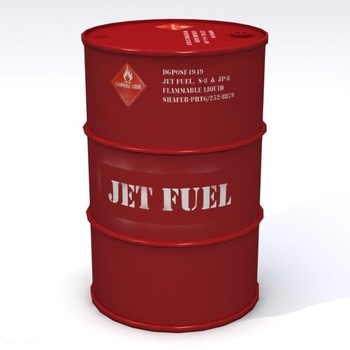
Q3 wrap: Asian jet fuel/kerosene differential falls on post-summer slump


The market soon fell into a lull in September with the end of the US peak summer season, a closed arbitrage window to the US, and weak Asian demand. FOB Singapore jet fuel/kerosene cash differentials went from plus 16 cents/b on July 10 to crunch to a year-to-date low of minus 59 cents/b on August 28.
US airlines saw record high demand this summer -- 74.8 million passengers in June, according to a Bureau of Transportation Statistics. Jet demand surged and US refiners ramped up production to record high levels. This resulted in a seven-year high build in nationwide jet inventories of 46.64 million barrels in the week ended September 21.
The peak summer jet demand also saw suppliers turning to South Korean refiners to meet shortfalls.
According to shipping sources, 380,000 mt of jet was shipped from North Asia to the US West Coast over July loading dates, while a year-to-date high of 500,000 mt was shifted in August -- far above the monthly average of 120,000 mt.
With the end of summer and high stock levels in the US, fewer cargoes from Asia were headed there. According to shipping sources, just 400,000 mt of jet was slated to move to the US West Coast from Asian ports over September loading dates. "Some term buyers are considering re-selling their cargoes in Asia ...[they] would rather do that, rather than bring them to the US," said a North Asian refiner.
Compounding these woes, Chinese spot demand this year has been underwhelming as refiners there continue to ramp up production of the aviation fuel.
According to S&P Global Platts' calculations based on data from China's National Bureau of Statistics, refiners there produced 31.72 million mt of jet over January-August this year -- a 15.1% yearly surge, and the highest out of all oil products.
"China has been buying and importing less [spot jet] ... there are even less outlets for surplus jet," said a Singapore-based trader.
FURTHER DECLINE LIKELY
Traders said that the Asian jet fuel/kerosene market could face further downside in the weeks ahead, given the recent closure of the East-West arbitrage window.
"It should get weaker, arbs are all closed," a Middle East-based trader said.
A strengthening of the Exchange of Futures for Swaps spread -- a measure of the relative strength of the FOB Singapore 10 ppm sulfur gasoil swap against the ICE Low Sulfur Gasoil Futures contract -- has stifled flows from the East to Europe.
As jet and gasoil are closely related middle distillate products, East/West arbitrage window economics for both products are similar, with traders able to gauge the viability of jet arbitrage economics by looking at the gasoil EFS spread.
The EFS has been trending towards the firmer side for much of Q3, on the back of a stronger Asian gasoil market which has worked to narrow the EFS significantly as compared to Q2.
Asian gasoil traders said that further upside is expected in Q4, a seasonally strong quarter for the middle distillate.
At the Asian close Thursday, the front-month EFS stood at plus $1.27/mt, just shy of the plus $1.42/mt -- which was a high for 2018 -- that was registered on September 24, S&P Global Platts data showed.
Just 1.2-1.5 million mt of jet is expected to arrive in Northwest Europe in September -- far lower than the 1.8 million seen last month.
Still, demand for jet fuel/kerosene as a heating oil during the December-February period is expected to give the markets a lift later this year.
These expectations were also reflected on the derivatives market, where the Singapore Q4/Q1 time spread was assessed at plus 14 cents/b Thursday. The prompt quarterly timespread has been assessed at an average of plus 43 cents/b throughout September.


Trump weighs using $2 billion in CHIPS Act funding for critical minerals

Codelco cuts 2025 copper forecast after El Teniente mine collapse

Electra converts debt, launches $30M raise to jumpstart stalled cobalt refinery

Barrick’s Reko Diq in line for $410M ADB backing

Abcourt readies Sleeping Giant mill to pour first gold since 2014

Nevada army depot to serve as base for first US strategic minerals stockpile

SQM boosts lithium supply plans as prices flick higher

Viridis unveils 200Mt initial reserve for Brazil rare earth project

Tailings could meet much of US critical mineral demand – study

Kyrgyzstan kicks off underground gold mining at Kumtor

Kyrgyzstan kicks off underground gold mining at Kumtor

KoBold Metals granted lithium exploration rights in Congo

Freeport Indonesia to wrap up Gresik plant repairs by early September

Energy Fuels soars on Vulcan Elements partnership

Northern Dynasty sticks to proposal in battle to lift Pebble mine veto

Giustra-backed mining firm teams up with informal miners in Colombia

Critical Metals signs agreement to supply rare earth to US government-funded facility

China extends rare earth controls to imported material

Galan Lithium proceeds with $13M financing for Argentina project

Kyrgyzstan kicks off underground gold mining at Kumtor

Freeport Indonesia to wrap up Gresik plant repairs by early September

Energy Fuels soars on Vulcan Elements partnership

Northern Dynasty sticks to proposal in battle to lift Pebble mine veto

Giustra-backed mining firm teams up with informal miners in Colombia

Critical Metals signs agreement to supply rare earth to US government-funded facility

China extends rare earth controls to imported material

Galan Lithium proceeds with $13M financing for Argentina project

Silver price touches $39 as market weighs rate cut outlook

















